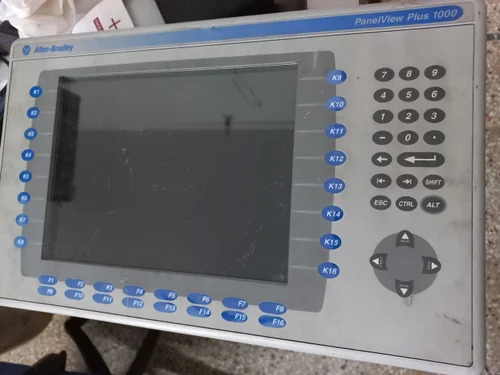In today's fast-paced industrial environment, hmi panel repair are crucial for the seamless operation of automated systems. However, when these panels malfunction, it can lead to significant downtime and operational inefficiencies. Understanding how to perform quick and effective HMI panel repairs is essential for minimizing disruptions and ensuring the continued smooth operation of your systems. In this comprehensive guide, we delve into the secrets of efficient HMI panel repairs, providing you with practical insights and strategies to address common issues swiftly.
Understanding HMI Panel Components and Common Issues
Human-Machine Interface (HMI) panels are sophisticated devices that facilitate interaction between operators and machinery.
They typically consist of various components, including:
Touchscreen Displays: The interface through which operators interact with the machine.
Power Supply Units: Essential for providing the necessary electrical power.
Processing Units: These handle data processing and communication.
Input/Output Modules: Responsible for communication between the HMI and other machinery.
Communication Ports: Used for interfacing with external devices and networks.
Common HMI Panel Problems
Screen Malfunctions: Issues such as unresponsive touchscreens, flickering displays, or dead pixels are common. These problems can often be traced back to hardware faults or software glitches.
Power Supply Failures: Inconsistent power supply can cause panels to shut down unexpectedly or fail to start. This might be due to faulty power units or electrical connections.
Software Errors: Corrupted or outdated software can lead to erratic panel behavior or complete failure. Regular updates and maintenance are crucial to avoid these issues.
Communication Failures: Problems with communication ports or input/output modules can disrupt data transfer between the HMI and other systems, leading to operational inefficiencies.
Steps to Diagnose and Repair HMI Panel Issues
Preliminary Inspection
Begin with a thorough visual inspection of the HMI panel. Look for any obvious signs of physical damage, such as cracked screens or loose connections. Check that all cables and connectors are securely attached and not damaged.
Power Supply Check
Ensure that the power supply unit is functioning correctly. Use a multimeter to measure the output voltage and compare it with the manufacturer's specifications. If the voltage is incorrect, replace the power supply unit with a new one.
Software Diagnostics
Run a software diagnostic tool to identify any potential issues with the panel's firmware or configuration. Check for any available updates and install them to ensure the system is running the latest software version. If software corruption is detected, consider performing a factory reset or reloading the firmware.
Communication Port Testing
Test the communication ports to ensure they are functioning correctly. Use diagnostic tools to check for proper signal transmission and reception. If communication issues persist, inspect and, if necessary, replace the input/output modules or communication cables.
Screen and Display Repairs
For screen-related issues, such as unresponsive touchscreens or display malfunctions, it may be necessary to replace the touchscreen assembly or recalibrate the display. Consult the manufacturer's guidelines for the appropriate replacement parts and procedures.
Best Practices for Preventive Maintenance
Preventive maintenance is key to avoiding costly repairs and extending the lifespan of your HMI panels. Here are some best practices:
Regular Cleaning
Keep the HMI panel clean and free from dust and debris. Use appropriate cleaning materials to avoid damaging sensitive components. Regular cleaning helps maintain the touchscreen's responsiveness and overall panel performance.
Firmware Updates
Regularly update the panel's firmware to incorporate the latest features and security patches. Keeping the software up-to-date helps prevent software-related issues and ensures compatibility with other systems.
Environmental Control
Maintain the operating environment within recommended parameters. Ensure that the HMI panel is not exposed to extreme temperatures, humidity, or corrosive substances. Proper environmental control reduces the risk of component failure.
Routine Inspections
Schedule routine inspections to identify and address potential issues before they become major problems. Regular checks of connections, power supplies, and communication ports can help prevent unexpected failures.
When to Seek Professional Assistance
While many HMI panel issues can be addressed with basic troubleshooting, some problems may require the expertise of a professional technician. If you encounter complex issues, such as internal component failures or intricate software errors, it is advisable to consult with a qualified technician. They can provide advanced diagnostics and repair services to ensure your HMI panel is restored to optimal condition.
Conclusion
Effective hmi panel repair are essential for maintaining the efficiency and reliability of automated systems. By understanding common issues, following diagnostic and repair procedures, and implementing preventive maintenance practices, you can ensure that your HMI panels remain in excellent working condition. When in doubt, seeking professional assistance can provide additional support and expertise to address more challenging problems.
Follow Us More Links:-
Follow Us On Facebook:- https://www.facebook.com/synchronics
Follow Us On Instagram:- https://www.instagram.com/synchronicselectronics/
Follow Us On Linkedin:- https://in.linkedin.com/company/synchronics
Follow Us On Twitter:- https://x.com/synchronics
Add:- 4th Floor, Lotus Enora, Opp. Rutu Villa Bunglows, 24 Mt. Main Road, New Alkapuri, Gotri, Vadodara 390 021, Gujarat (INDIA)
Call Us :- +91-704-308-4455 || +91-704-309-4455 || +91-265-400-1555 || +91-265-356-1183
Email Us:- [email protected]





Comments